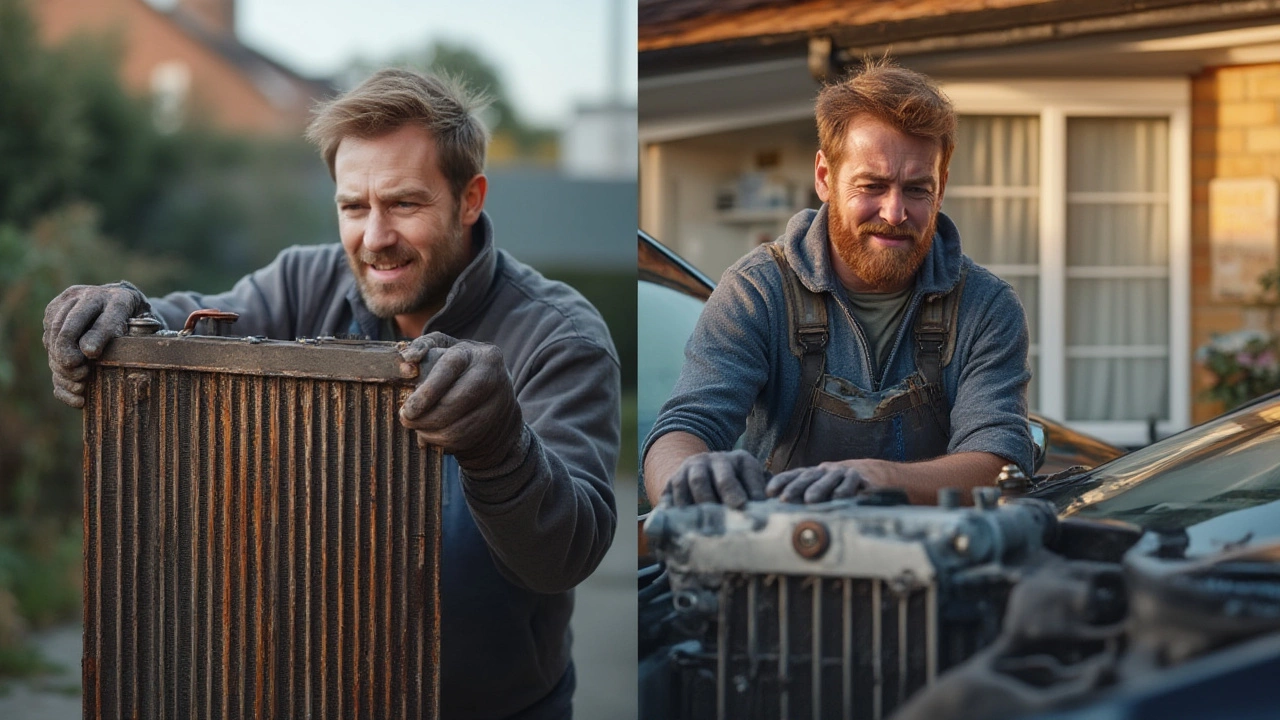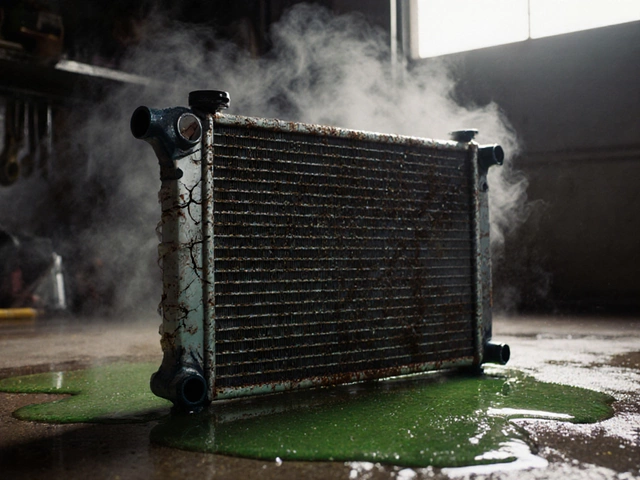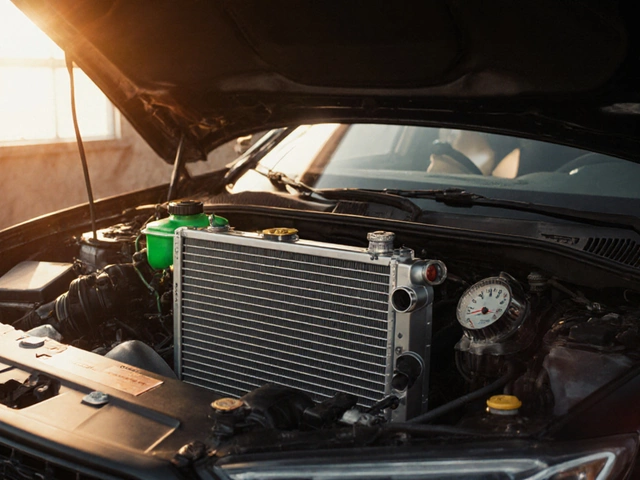One minute your car is gliding smoothly; the next, steam billows from under your hood like a tea kettle boiling over. A busted radiator is nobody’s favorite surprise. And it always seems to happen at the worst time. Ever wondered why a small metal box stuffed between your car’s headlights can cost as much as a weekend getaway? Or why some radiators seem to cost more than your entire vacation budget? It’s not just about the part itself—it’s way more complicated (and honestly, more interesting) than it looks.
What Does a Car Radiator Actually Do?
Ask anyone who’s dealt with an overheated engine: radiators are real MVPs. They keep your engine cool, no matter if you’re driving through desert heat or stuck in city gridlock. Here’s how: your engine burns fuel and generates a ton of heat. The radiator works with coolant fluid, channeling heat away from the engine and releasing it to the air. If the radiator fails, the engine doesn’t just overheat—it can suffer permanent damage. Modern radiators are usually made of aluminum and plastic, but some older or high-performance ones use copper or brass. Fancy versions can even have extra cooling rows or built-in fans. When shopping for a new radiator, the material and design matter just as much as the brand.
Get this: one small leak can drop the coolant level fast, and when that happens, your car could be seconds from breakdown. A good radiator isn’t just about keeping things cool—it’s about keeping the whole ride alive. That’s why people pay attention to brands, build materials, and even the warranty (pro tip: always look for warranties when buying). Radiator technology has come a long way in twenty years, which is why you can find both dirt-cheap and eye-wateringly expensive options on the market today.
How Much Does a Car Radiator Cost in 2025?
This is what most folks want to know right away: what’s the price tag? The thing is, radiator prices vary a ton. The average price for a car radiator cost in 2025 sits between $120 and $500 for most daily drivers, with luxury and high-performance radiators sometimes topping $1,000. Economy sedans usually get away with $120 to $220 for a new part. Mid-size SUVs and crossovers hover around $180 to $350. Pickup trucks and bigger SUVs? More like $220 to $500—and that’s just for the part. If you drive a performance model (think BMW M series or Dodge Hellcat), prices can spike fast.
Why such a big range? It depends on several things:
- Make and model: Some radiators are super common, others only fit certain models or years. Rare = more expensive.
- Materials: All-aluminum and heavy-duty copper models cost more. Standard ones use a mix of plastic (tanks) and aluminum (core).
- OEM vs aftermarket: Original equipment radiators usually cost 30%-50% more than aftermarket ones. If you don’t care about the logo, aftermarket can save you big.
- Special features: Built-in transmission coolers, double-row cores, or extra mounting hardware all add to the price.
Here’s a quick look at some example radiator prices by vehicle type:
| Vehicle Type | Radiator Cost (Parts Only, USD) | Labor Cost (USD) |
|---|---|---|
| Compact sedan (Toyota Corolla) | $125 - $220 | $110 - $220 |
| Mid-size SUV (Honda CR-V) | $180 - $320 | $130 - $260 |
| Full-size truck (Ford F-150) | $250 - $460 | $180 - $320 |
| Luxury/Performance (BMW M3) | $400 - $1200 | $220 - $430 |
Add in the labor, and you’re looking at a total bill anywhere from $220 to $1,600. Labor usually takes 1-4 hours depending on how packed your engine bay is. Shops in big cities charge more per hour (sometimes double what rural shops do). A dealership will almost always charge the most, while independent garages and mobile mechanics sometimes shave 20-30% off the job price.

What Drives Radiator Prices Up or Down?
Not every radiator is made equal, and not every repair shop charges the same. Supply and demand drive a lot. In 2024 and the start of 2025, material prices spiked—aluminum was up 17% compared to two years earlier. That’s pushed radiator costs up across the board. If you notice prices jumping, you’re not imagining things.
OEM radiators cost more, sometimes by hundreds, simply because they’re “official.” But plenty of aftermarket brands (like Denso or Spectra Premium) make solid radiators—often in the very same factories. For older rides, availability can be a problem. If a car’s been out of production for a while, parts get scarce, and prices go up.
Labor rates swing wildly even in the same town. A shop specializing in imports or performance vehicles won’t touch your radiator for the same rate the quick oil-change place down the street charges. Complexity matters—a radiator job on a cramped engine bay (like a Chevy Camaro) takes more time than a big, open pickup truck bay.
DIY installation saves money but comes with risk—mess up the install, and you could fry the engine next time it overheats. But if you’re mechanically savvy, some shops will even let you bring your own radiator and just charge labor for installation. This hybrid approach works for folks who want quality parts but want to avoid dealership mark-ups.
Should You Repair or Replace the Radiator?
If you catch the problem early, it’s sometimes tempting to just repair that tiny leak with some DIY solution. There’s a whole aisle at the auto parts store dedicated to “radiator stop leak” products. Here’s the truth: sometimes those products work for a while, but they can gum up the coolant system and actually make things worse down the line, especially in newer cars.
Spotting a leaky radiator isn’t rocket science. Look for colored puddles under the engine (usually green, pink, or orange), low coolant warnings, or that dreaded temperature gauge creeping up. If you see sludge under the radiator cap or smell a sweet odor, that’s usually a sign things are going south. If you can see the leak, it might be possible to patch it up—but most pros say a replacement is the better long-term fix.
- Good candidates for repair: Small cracks in plastic end tanks, pinhole leaks in metal cores, and loose hose connections. If your car’s older and not worth a ton, a budget patch might buy some time.
- Time to replace: Large cracks, repeated leaks, signs of contamination in the coolant, or corrosion along the seams. If you already tried a stop-leak and things got worse, don’t double down—time to swap it out.
Most repair shops offer a warranty for full replacement, but rarely for repair work, unless you get an entirely new radiator core welded in. That’s why people rarely mess with repairs past minor issues. In 2025, more drivers than ever swap out old radiators with new ones, especially since dragging out a dying part can ruin the engine—a way pricier mistake.

Buying Tips: How to Save Money on Radiator Replacement
Car repairs don’t have to drain the savings account. Want to knock a few bucks off the final price? Here’s what actually works:
- Shop around for quotes (both part and labor). Prices are rarely fixed.
- Ask about aftermarket options—they’re usually 20-40% less than OEM.
- Buy online if you’re confident you’re getting the right fit. Big auto part sellers often have warehouse deals or coupon codes.
- Check if your car is under warranty or recall—sometimes radiators are covered.
- Do basic prep work yourself: drain coolant, disconnect the battery, or even remove covers to save time on hourly rates (just make sure this won’t void warranties).
- If your radiator died because of another part (bad water pump, broken fan), get that fixed too, or you’ll be repeating this expense soon.
- Replace hoses and clamps along with the radiator so you don’t have to “go in” twice.
Looking after your radiator is still the cheapest move. Flush the coolant according to your manual (sometimes every 3 years or 36,000 miles), and never fill it with tap water unless you’re desperate. Modern coolants last longer, but mixing old and new or using the wrong type can wreck seals and gaskets. The right fluid protects the whole cooling system—think of it as cheap insurance.
Watch for symptoms like odd engine temps, gurgling sounds, or a sudden rise in temp gauge—these early warning signs mean prevention could save you a fortune long before a total failure (and the cost that comes with it).


